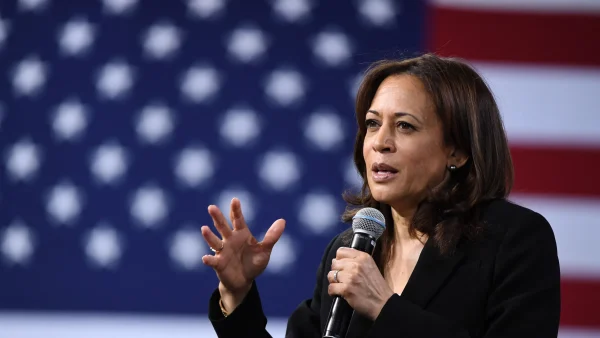The Fall of the American Dream
One of the most distinct memories of my childhood is going to my grandparent’s house every Saturday morning. I would eat my breakfast in my grandma’s bed, the cold air of the AC keeping me cool and comfortable. I would turn up the TV and watch morning cartoons on Boomerang. I remember enjoying all the classic shows like Scooby-Doo, Looney Tunes, The Jetsons and The Flintstones. I remember thinking how similar these last two shows were. Both of them placed a high emphasis on reflecting and presenting the “typical” structure of a family.
Two hard-working parents, 2-3 children, at least one of each gender found in each family, and a pet. I soon came to realize that many of these childish cartoons did their best to paint a clear picture that reflected what the average middle-class American family strove to look like. As I became older, I realized that this vivid image, which was being portrayed by many childish cartoons, was also seen reflected in more mature television shows. Shows like Modern Family, The Simpsons, Family Guy, and American Dad, all reflect this idea of what it means to have the “perfect” family or present their interpretation of what the ideal “perfect” family looks like. This pristine, almost magazine-like version of what the perfect American family should aspire to look like was an image I began to conjure up everywhere I went, found in every type of media I watched.
One of my senior year assignments required me to write an essay comparing and contrasting two distinct films of the 21st century which depicted two American ideals that have long been embedded into American economics and politics: capitalism and consumerism. Both films criticized the fact that consumerism, the intrinsic need to want to own and buy frivolous products seemingly and needlessly, had become an almost addictive and characteristic quality of American life. I was asked to analyze to the extent to which the films focused on the critique of this very facet of American life. The more research I did, the more I noticed that these filmmakers were commenting on an American trend seen amongst the younger generation of Americans. They were commenting on the fact that this newer generation of Americans (at the time millennials) had begun to prioritize the accumulation of wealth and frivolous spending as opposed to a more traditional norm that focused on the upholding and seeking of traditional family values. This is when everything started to come together.
What I was essentially seeing across the same media was the appreciation and representation of two different Americanized values, representative of two different generations. Shows like The Simpsons, Family Guy, The Flintstones, and The Jetsons all seemed to reflect the ideals of an older American generation, one that prioritized family matters. Back then, the “American Dream” was all about becoming successful in America, but what defined success was how close you were to enjoying a life that reaped the benefits of that traditional American life. Owning a car, a suburban house, having a family, were all things that used to be considered the pinnacle of rejoicing with the “American Dream”. Over time, however, this was phased out. A younger, more ambitious set of Americans shifted away from this ideal and began to prioritize the accumulation of wealth. Films such as Fight Club and The Wolf of Wallstreet play their part in portraying a new rendition of the theme of the “American Dream.” They reveal a rupture and descent of what used to be the old “American Dream” in favor of a more ambitious one. One that reflects capitalistic and consumerist values, doing whatever it takes to get ahead, earning money whilst doing it, and finding frivolous ways to spend that money.
Now more than ever, it’s clear to see how the government now actually supports this new ideal. This notion of prioritizing monetary gain and economic growth over anything and everything else. The spread of the COVID-19 virus has made this assessment abundantly clear, with President Trump doing everything in his power to normalize the American markets, to reopen America, and to ensure that businesses are operating and that people are returning to work as quickly as possible. Despite countless warnings that doing so will only allow the virus to spread and countless more to get infected with the virus, Trump has remained adamant about his position to resume American business and trade.
All of this goes to show the extent to which American politics have also shifted drastically in favor of this new American ideal. The extent to which American politics have now prioritized economic growth over the medical wellbeing of its citizens only goes to show how strongly America is now portraying what was originally criticized in these films and cartoons so long ago. This shift in the perception of what it means to want to pursue and reach the “American Dream”, shows how drastically American values have shifted and how they now seem to prioritize economic and personal growth. The acquisition of wealth, and the superficial attitude that is taken when it is spent.
In the context of a global pandemic, it’s very alarming to see the human impact that ideals like these may have as an immediate effect. If economic growth is still seen as the pivotal and most important aspect en-route to recovery from the pandemic, it’s concerning to imagine just how many people will become affected in the long run. How many lives will be lost in the pursuit of what is now seen as the new “American Dream”.
Opinion Disclaimer: The opinions, beliefs, and viewpoints expressed by the various contributors to this website are their own, and do not necessarily reflect the opinions, beliefs, viewpoints, or official policies of The Baldwin School of Puerto Rico.
Your donation will support the student journalists of The Baldwin School of Puerto Rico. Your contribution will allow us to purchase equipment and cover our annual website hosting costs.



